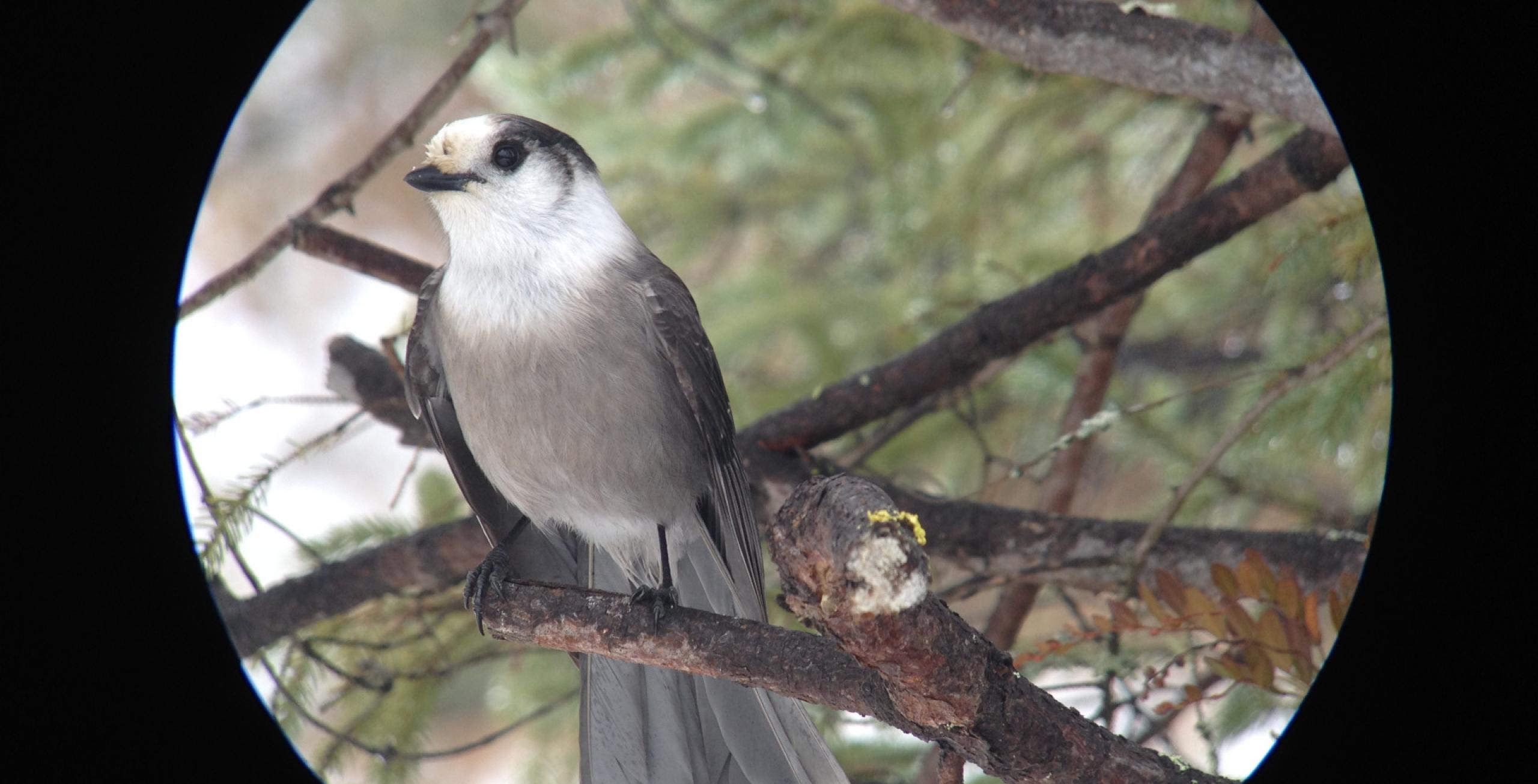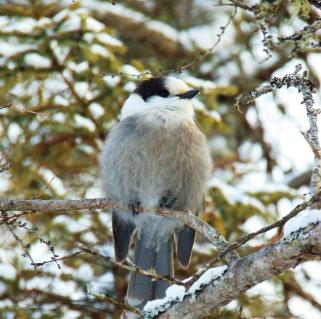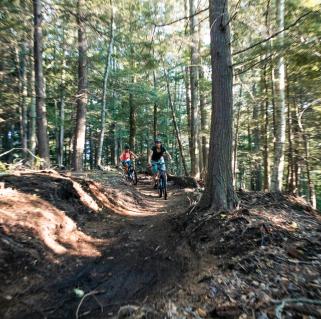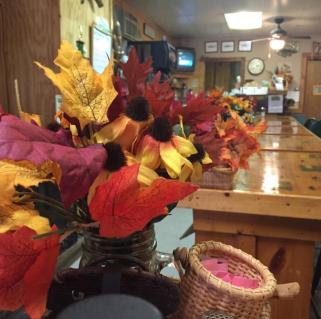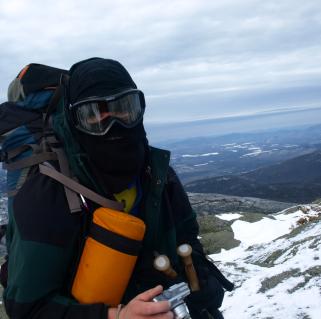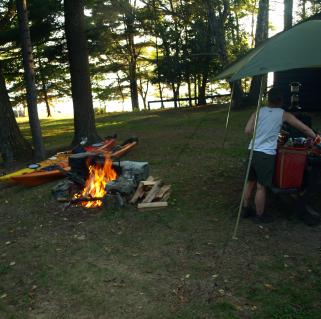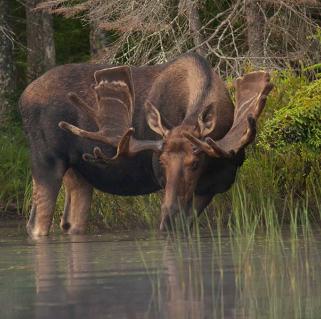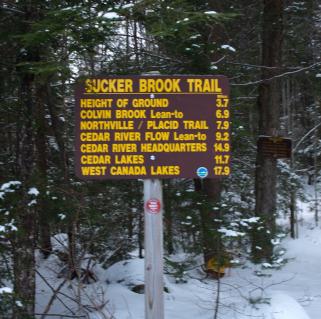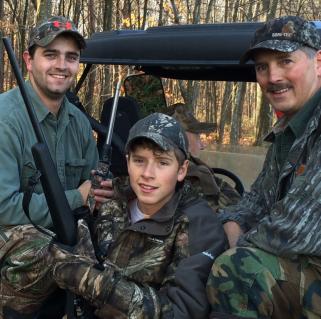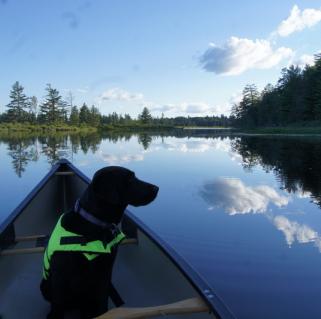Camp Robber, Whiskey Jack, and Gray Jay are but a few of the endearing nicknames used to describe a Canada Jay (Perisoreus canadensis). A member of the corvid family, which in our area also includes Blue Jays, American Crows, and Common Ravens, Canada Jays are highly intelligent birds and easily tamed.
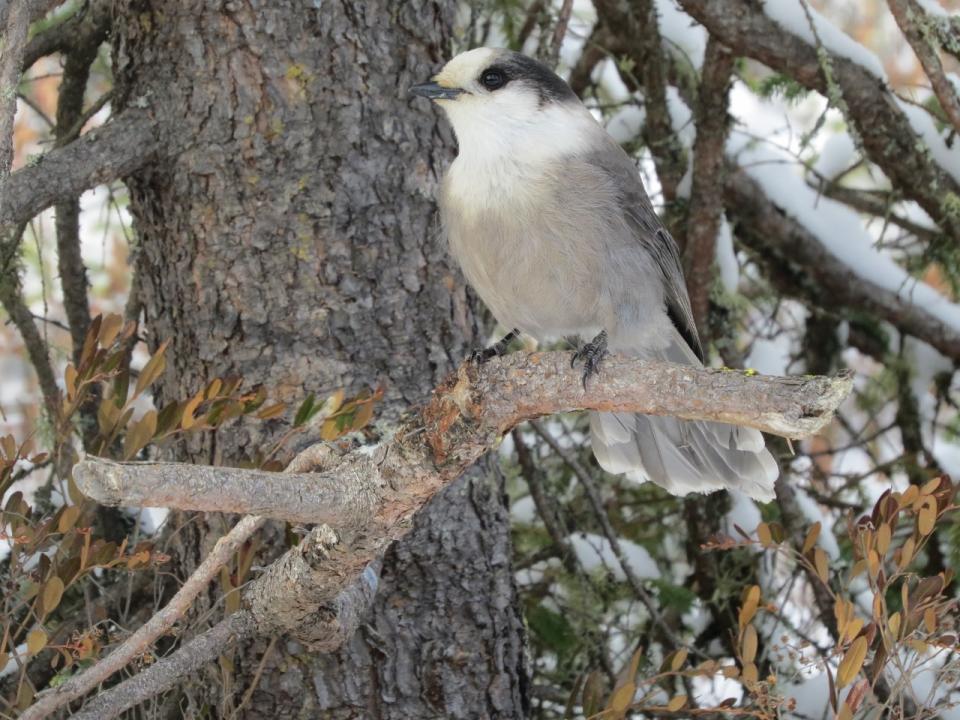
Breeding range
Canada Jays breed across northern North America with roughly 80% found in Canada and 20% in the United States. In the east, the Adirondacks represent the southern edge of their range. It is one of the sought after boreal species that brings birders to our area.
Winter nesting
Canada Jays are year-round residents in the Adirondacks. Life-long pairs begin nesting toward the end of winter in late February/early March. Their young fledge in April. The nest below was discovered in early March of 2012 along the road to Great Camp Sagamore in Raquette Lake.
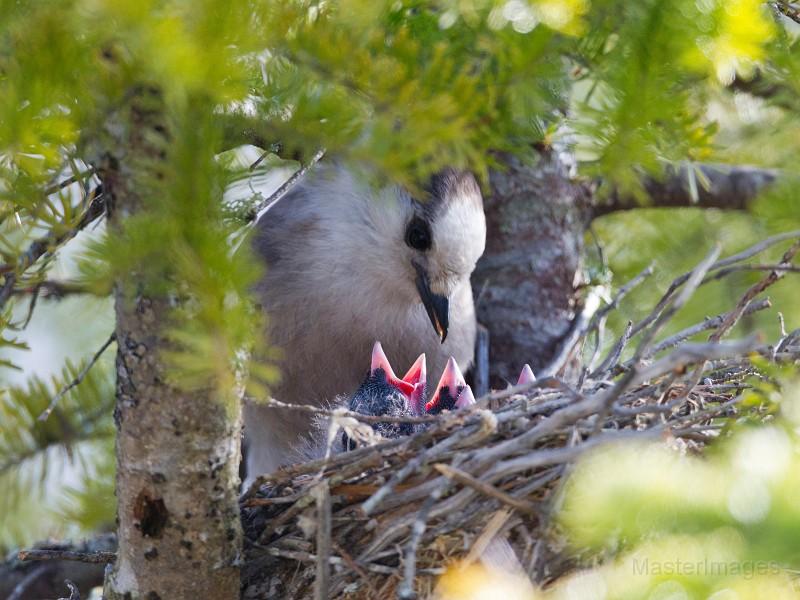
Larry Master and I monitored this nest until the 4 young fledged during the third week of April. One day, I arrived when it was 32 degrees and raining. The female Canada Jay turned itself into an umbrella with wings and tail spread wide to completely cover the 4 large nestlings. It looked quite uncomfortable for the adult, and I was impressed with the dedication of the parents to care for the young in such extreme conditions.
One of the theories for why Canada Jays nest in late winter/early spring is that they need to raise their young early so they can spend the summer caching food for winter. In June, the dominant juvenile will expel its siblings from the parents' territory. The dominant juvenile stays with its parents. The expelled Canada Jays often attach themselves to unrelated pairs of adults. The young also need time to cache food so they can survive the winter (most of the evicted young do not survive). Young Canada Jays are completely gray (see below)!

A remarkable memory
Canada Jays cache food in thousands of locations, which they remember. They use sticky saliva to glue food items to forks in trees, on conifer needles, under lichens, or behind pieces of bark. One fall day, I spent 3 hours feeding my lunch to Canada Jays at Ferd's Bog not far from Raquette Lake. They cached the food in a wide area, 360-degrees around the edge of the huge bog.
Omnivores
Canada Jays are omnivorous and will eat almost anything. In winter, you can often observe Canada Jays eating carrion along the road.
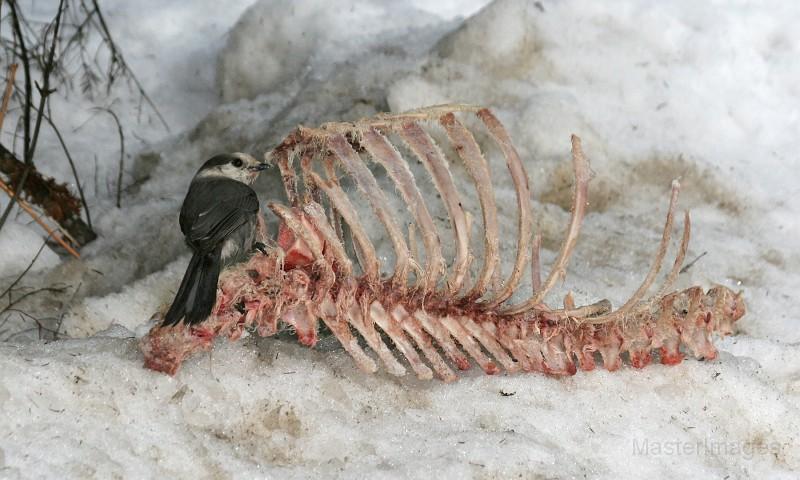
It doesn't take long for Canada Jays to associate humans with food, which is the reason for the "Camp Robber" nickname! They rarely flap their wings, but instead, silently glide from tree to tree like owls, so they can sneak up behind you without a sound!
Much of a Canada Jay's time, especially in winter, is spent sitting at the very top of a conifer tree. Often they pick the tallest tree from which to survey their world.
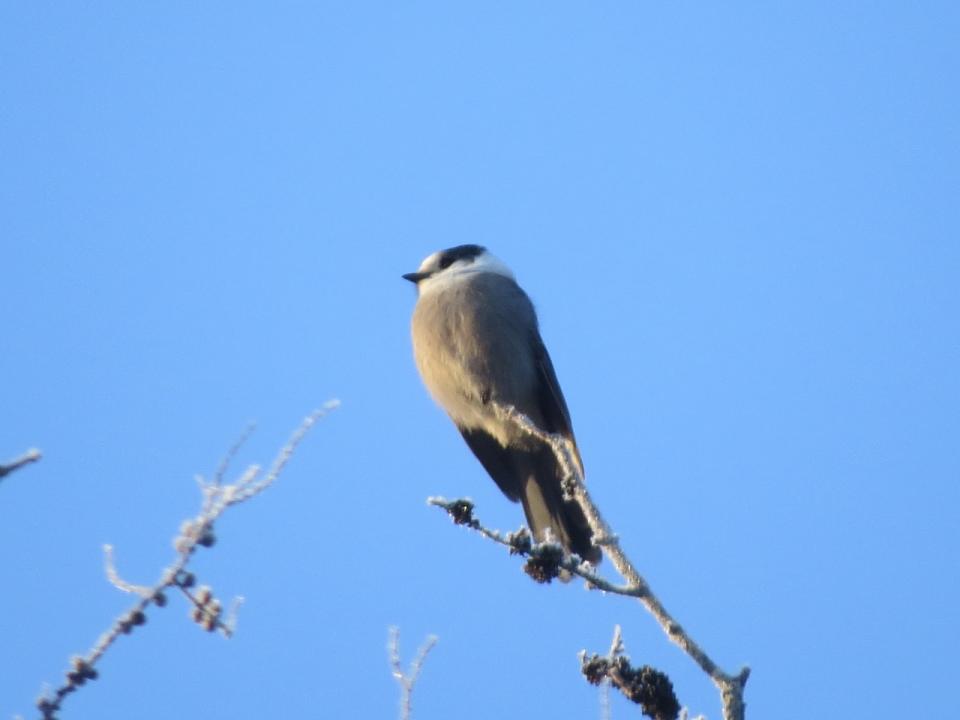
Wild sounds
Canada Jays make seemly unlimited vocalizations. They give soft notes and make loud chattering sounds. Often, when I am hiking in remote boreal habitat, I am stopped in my tracks by what sounds like a woman being stabbed. Always it is the sound of a screaming Canada Jay. They will also perfectly imitate other birds, such as Blue Jays, or raptors, such as Northern Goshawks.
A very tame bird
People who live near boreal habitat are fortunate to have Canada Jays come to their feeders.
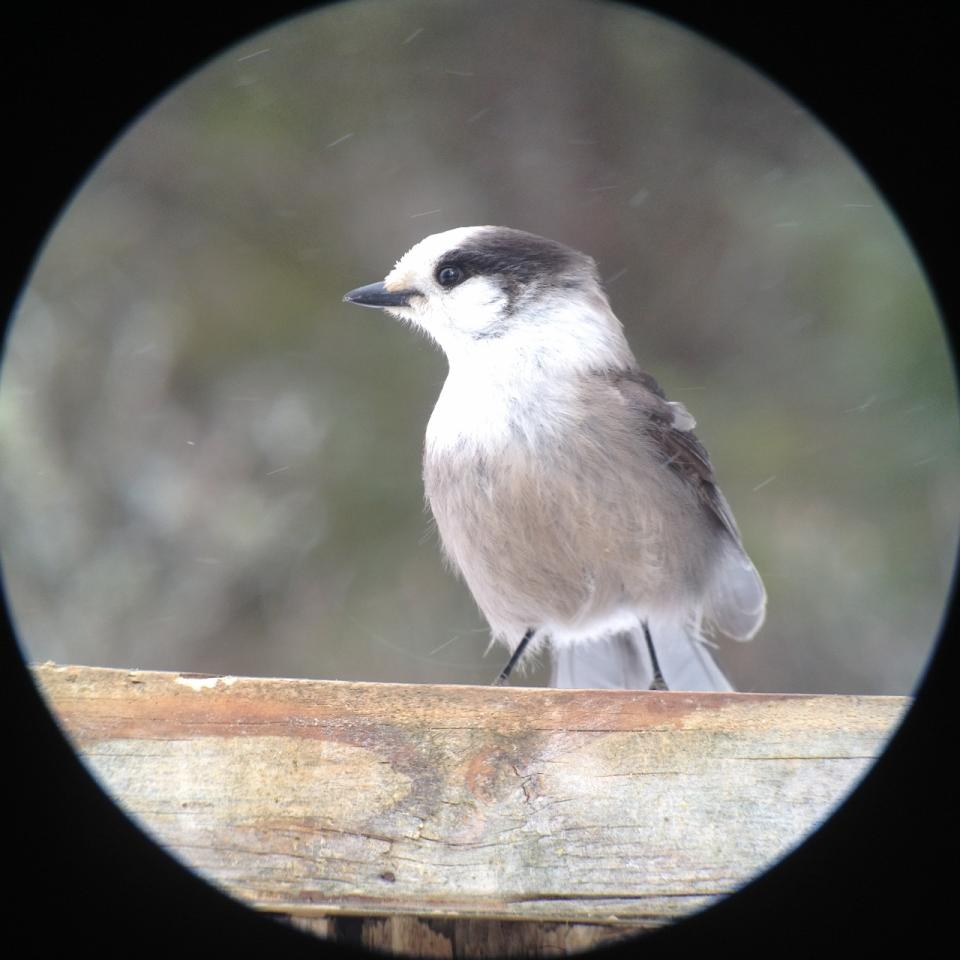
This past fall, I decided to test this theory with the Canada Jays at Sabattis Bog. It didn't take long for the Canada Jays to associate me with food and on most of my trips to the bog they now greet me at my car. (I quickly learned that Canada Jays are particularly fond of raisins.) Canada Jays are so remarkably observant that you wonder if they don't have eyes at the back of their heads. They don't miss a thing. If you drop a nut or raisin, they will immediately retrieve it.
So much personality
Much has been written about the intelligence of corvids, with some who believe they are smarter than dogs. Spending time with Canada Jays is a truly charming experience. It is such a joy to see a person's face light up when such a large bird is not wary of human presence. It can also be fun to "talk" with Canada Jays. I imitate them and then they respond by varying how many notes they give – as if they are testing me. They are delightful birds!
Where to look for Canada Jays
Canada Jays live in boreal forests, especially near bogs. Hamilton County sits at the heart of the boreal zone that runs in a diagonal line across the Adirondacks from the northeast to the southwest. Some of the more popular places to look for Canada Jays include: Sabattis Bog, Ferd's Bog, Moose River Plains, Raquette Lake, and Charlie Pond outlet off Little Tupper Lake. I often spot Canada Jays along Route 30 between Long Lake and Sabattis Circle Road, and along Route 30/28 between Long Lake and Blue Mountain Lake, so keep an eye out while driving!
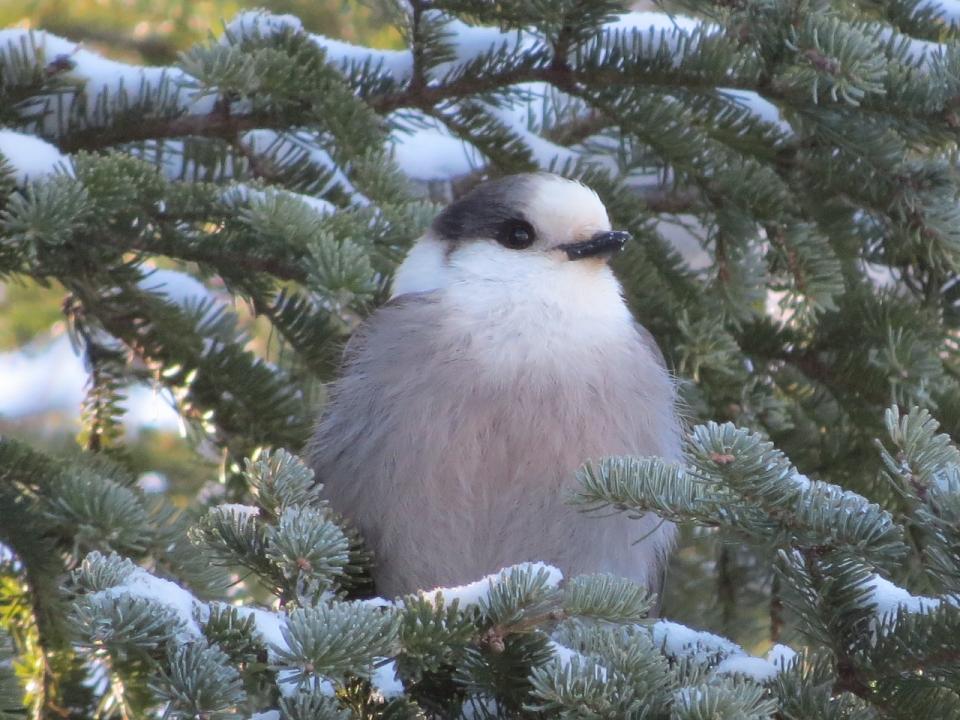
If you visit Hamilton County in search of boreal birds, there are many wonderful restaurants and places to stay that will make your trip even more enjoyable.
--
This week in ADK news...

